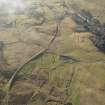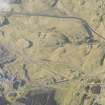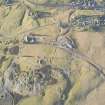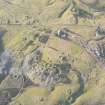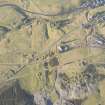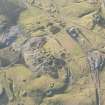Leadhills
Lead Mine(S) (Period Unassigned)
Site Name Leadhills
Classification Lead Mine(S) (Period Unassigned)
Canmore ID 46412
Site Number NS81SE 6
NGR NS 88 14
Datum OSGB36 - NGR
Permalink http://canmore.org.uk/site/46412
- Council South Lanarkshire
- Parish Crawford
- Former Region Strathclyde
- Former District Clydesdale
- Former County Lanarkshire
NS81SE 6 88 14
For lead mines at Wanlockhead (NS 87 13), see NS81SE 2.
There is written evidence of mining at Leadhills for the year 1600, and gold was mined in the area at the time of Queen Elizabeth.
NSA 1845
Lead is said to have been first discovered at Leadhills by Martin Templeton in 1513. Whatever discovery may have been made then, it is certain that the mines were known 300 years before that time. Several charters of the time of Alexander II mention mines in a situation corresponding wtih the Lead Hills, showing that the mines were then well-known, and were then probably wrought.
During the reigns of James V, Queen Mary, and James VI, there are numerous notices of the working of the gold mines and the lead mines of Crawfordmuir, Glengonner, and Wanlockhead.
G Chalmers 1887
The first record of lead mining in the Leadhills district was that of the mine at Glengonnar being worked by the Monks of Newbattle in 1239. It is an accepted fact that mining was carried on long before then. It declined for a bit, but was recommenced in 1562. In 1592 the lead mines came under the ownership of Bevis Bulmer a skilled miner, and to this day many old dumps are known as 'Bulmer's Dumps'. Smelting of lead has not been carried on for several year, the ore being sold direct from the dressing floors.
R Brown 1927
There are innumerable disused lead mines in this area, and gold has been discovered in or around most of the streams.
Visited by OS (JD) 7 July 1955.
(Location cited as NS 88 15). Leadhills, active 17th century to early 20th century. A lead-mining village with the small rubble cottages of the miners. Interesting features are the warning bell (NS 885 148) and the Miner's Library. Round the village are complex remains of lead mining, though virtually no complete structures survive.
J R Hume 1976.
Field Visit (13 May 2012 - 28 May 2012)
NM 819 002 (centred on) The overall aim of the research project is to identify prehistoric copper mining in Scotland. The survey began, 13–28 May 2012, by visiting sites where probable hammerstones have been found. Sites visited included Barhullion, Balcraig, Kirklauchline and Wanlockhead all in Dumfries and Galloway, an area where the discovery of a copper ore (bornite) outcrop in a recent quarry at Kirklauchline was of particular interest.
Several other copper mining districts in SW and central Scotland were also visited, including the Tullich Mine at Loch Tay (Perth and Kinross), different sites in the mining district of Wanlockhead/Leadhills (Dumfries and Galloway/South Lanarkshire), Mary’s Mine/Tonderghie (Dumfries and Galloway) and the Kilmartin Copper Mine (Argyll and Bute). Around Bridge of Allan in the Ochill Hills are several copper outcrops where the late medieval Airthrey Hill Mine spoil heaps (Stirling) are easily accessible and still contain a good quantity of copper ores. In Argyll and Bute the mining remains of Abhain Strathain/Meall Mor, at Kilfinan (Murder Lode) and Castleton/Castletown (SE of Lochgilphead) revealed good ‘grey copper ores’, especially at Castleton where the mineralised vein outcrops are easily seen on the shore. In addition the 2012 survey discovered another ore vein along Kilmartin Glen, at the Duntroon Hillfort. The mineralisation is very interesting because of its proximity to numerous archaeological sites.
Further investigation is planned in the area and on other old mining sites in Scotland for 2013. A collection of ore samples has been stored at the National Museums of Scotland, which will hopefully be enlarged in the future to provide a reliable database for investigations, such as the comparison of trace element and lead-isotope ratios in the samples with those found in prehistoric metal objects.
Archive: National Museums of Scotland
Funder: German Archaeological Institute, Department Rome
Daniel Steiniger, German Archaeological Institute, Department Rome
2012














































